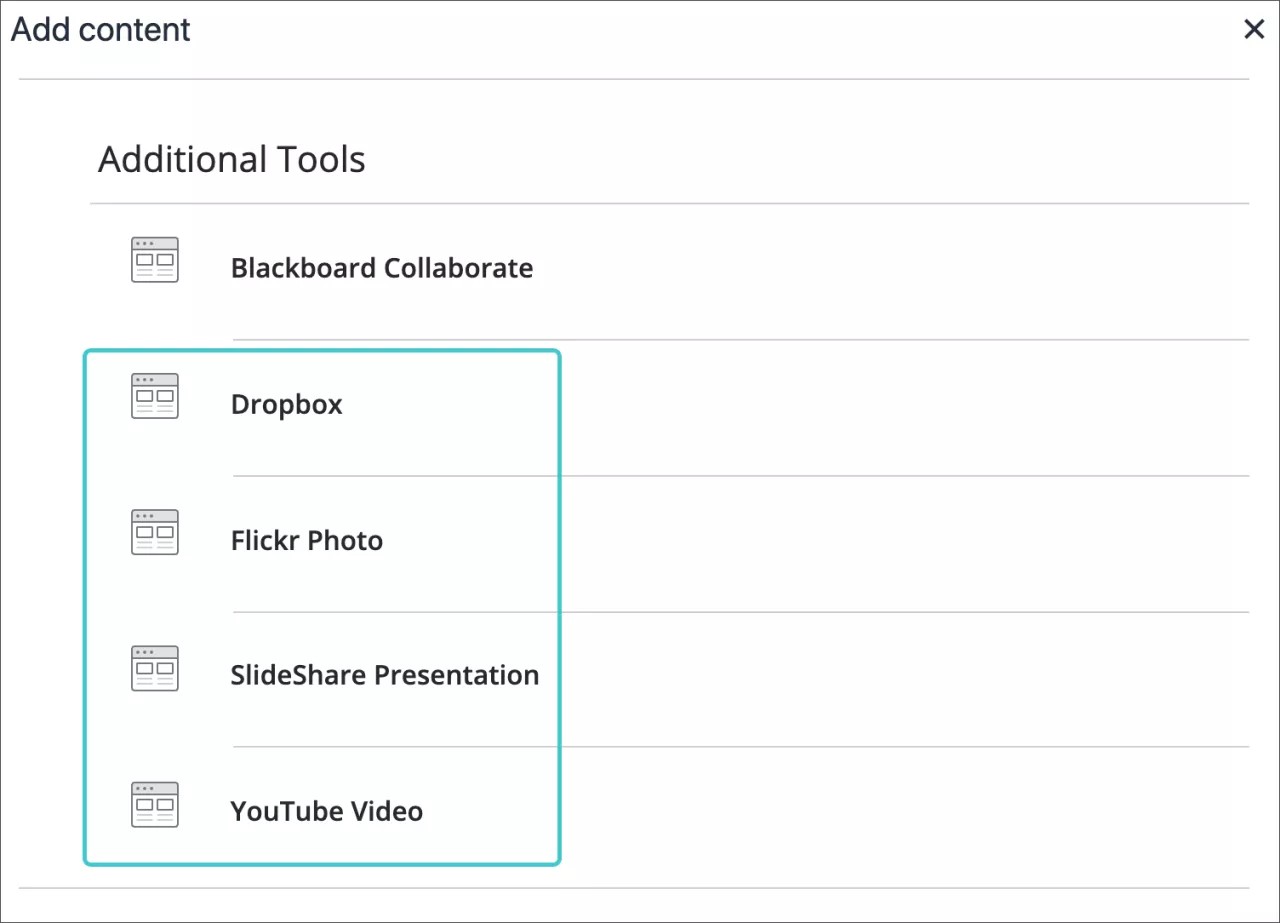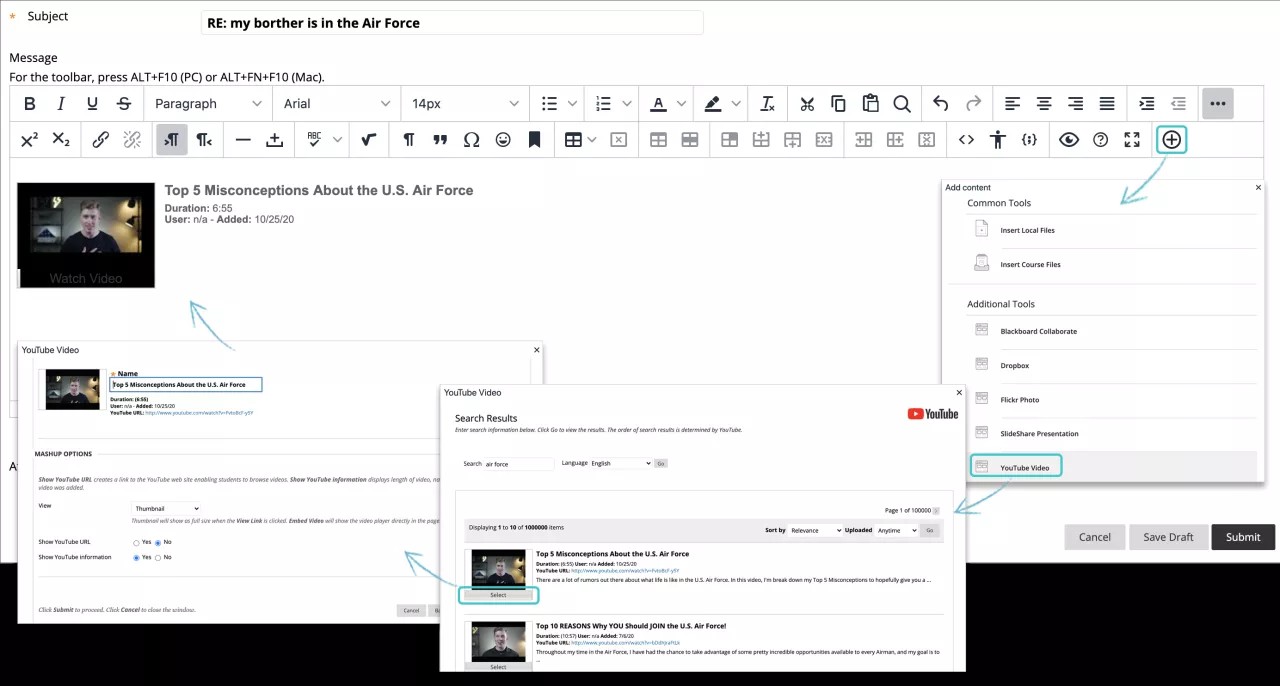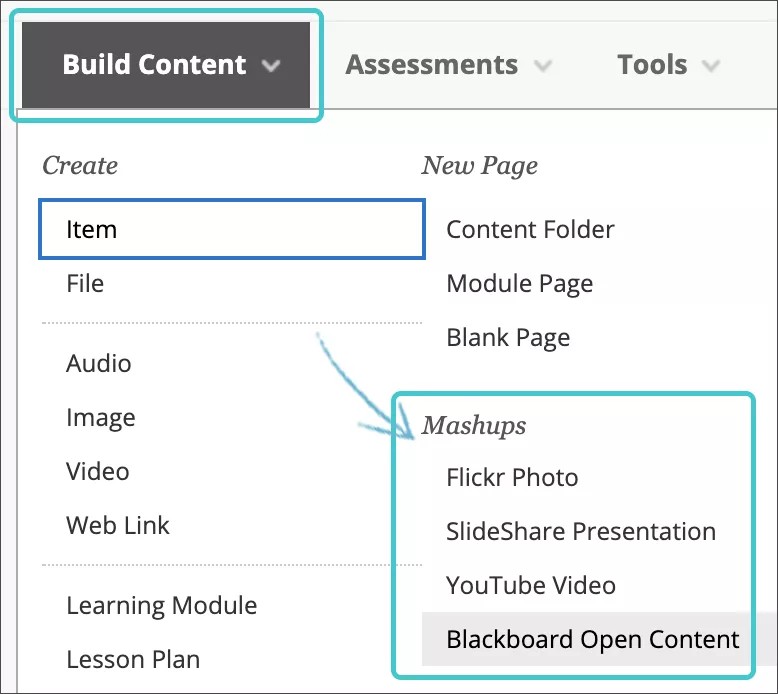What is a mashup?
Wherever you can add and format text in your course, you can add social media from other websites to your content. These social media elements that appear in a course are called "mashups." A mashup combines elements from two or more sources. For example, when you view a YouTube™ video as part of the course content, you're experiencing a mashup.
You can add mashups to test questions, discussions, assignments, or as a standalone piece of content. You can also add a clip of a movie or a photo in a journal, blog, or wiki.
Types of mashups
You and your institution control which mashup types appear in the editor. Typically, the menu includes these types:
- Flickr®: Share photographic images.
- SlideShare: Share slide presentations, documents, or Adobe PDF portfolios.
- YouTube: Share online videos.
- Dropbox: Share files from your Dropbox account.
Add mashups in the editor
Wherever you want to add a social media element, access the editor. Select the Add Content icon and choose the type you want to search, such as YouTube Video.
On the search page, type your keywords and select Go. You'll receive a list of items that you can sort. You can also see how many items and pages are returned for your search.
When Preview is available, you can view the items in their own windows. You can also preview videos with the URLs listed in the descriptions.
After you have explored the search results, select an item. You can change the title of the item if you don't want to use the one provided.
Set mashup options
You can choose how a mashups appear on the screen:
- Embed: The mashup appears directly on the screen.
- Thumbnail: A small picture of the mashup appears with a Watch option.
- Text Link with Player: A link to the mashup appears. This option doesn't appear for photos. However, you can set a size for a photo.
Select Yes for Show URL to create a link to the website. For YouTube videos, Select No if you don't want to show suggested videos at the end of playback.
Select Yes for Show information to display the length of the mashup, name of the creator, and the date the mashup was added.
Before you submit, select Preview and view how the mashup will appear in your content. Close the preview window to make changes.
The original website can change a mashup's URL or delete it, which will cause an error in your course.
Add mashups from the Build Content menu
In a content area, learning module, lesson plan, or folder, you can also add a social media element from the Build Content menu. When you add social media from the menu, the element appears as a standalone piece of content.
After you submit, the mashup appears in the content list. You can change the mashup's content at any time. Open the mashup's menu and select Edit.
Privacy setting
An unlisted video doesn't appear in YouTube searches, and only users who know the link can access the video. However, complete privacy isn't guaranteed. The unlisted setting allows authors to publish and share videos easily without a need for specifically choosing who can view the video. If users have access to where the video is published, they can view it. They can also select the YouTube logo on the video which allows them to view the unlisted video on youtube.com.
You can change the privacy setting to Private. From the video library, edit the video to make it private in the YouTube clip edit settings. If you make a video private, only the users you specifically include, and who have a Google account can view it. Private videos appear in the library with a lock next to them. Only the author and specified viewers can view private videos.




